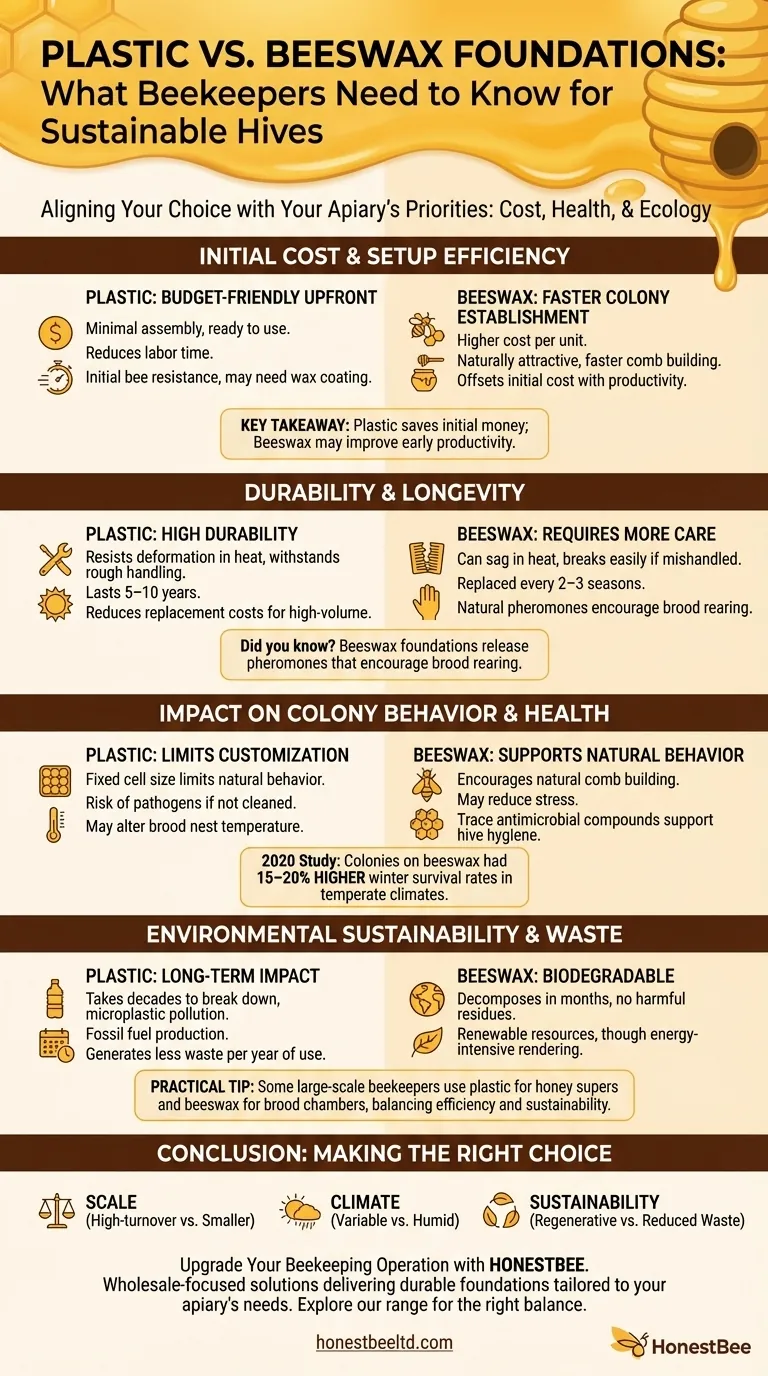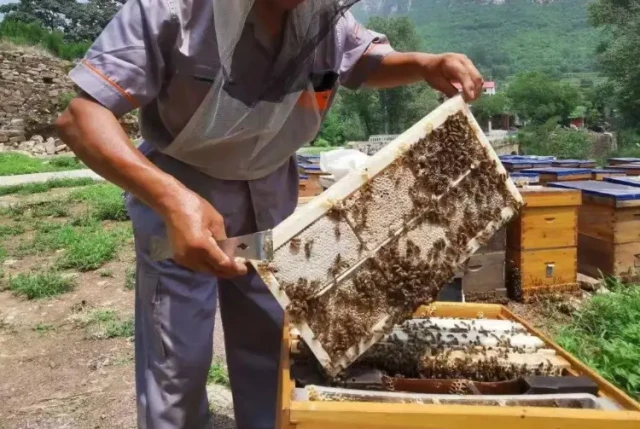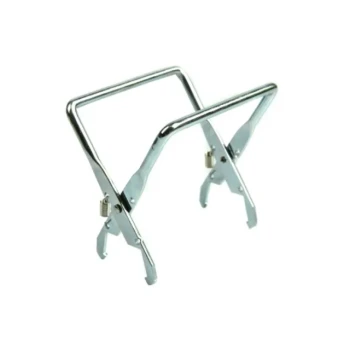Beekeepers face a critical choice when selecting hive foundations: plastic or beeswax. Each material impacts colony health, operational efficiency, and environmental sustainability differently. This guide examines the trade-offs to help you align your choice with your apiary’s priorities—whether that’s cost-effectiveness, bee welfare, or ecological responsibility.
Choosing Between Foundation Materials
The foundation material you select influences everything from hive productivity to long-term sustainability. Here’s how plastic and beeswax compare across four key dimensions:
Initial Cost and Setup Efficiency
Plastic foundations are the budget-friendly option upfront. They require minimal assembly and are ready to use immediately, reducing labor time for commercial operations. However, bees may initially resist drawing comb on plastic, sometimes needing a light beeswax coating for acceptance.
Beeswax foundations, while more expensive per unit, are naturally attractive to bees. Colonies typically build comb faster on wax, reducing the time between hive setup and honey production. For beekeepers prioritizing rapid colony establishment, this can offset higher initial costs.
Key Takeaway: Plastic saves money initially; beeswax may improve early colony productivity.
Durability and Longevity in Hive Management
Plastic excels in durability:
- Resists deformation in high heat
- Withstands rough handling during inspections
- Lasts 5–10 years with proper maintenance
Beeswax requires more care:
- Can sag in summer heat without reinforced wiring
- Breaks easily if mishandled
- Typically replaced every 2–3 seasons
For high-volume apiaries, plastic’s longevity reduces replacement costs. Smaller-scale beekeepers might prefer beeswax’s natural appeal despite shorter lifespan.
Did you know? Research shows beeswax foundations release pheromones that encourage brood rearing—a subtle advantage for colony growth.
Impact on Bee Colony Behavior and Health
Bees interact differently with each material:
Beeswax foundations:
- Encourage natural comb-building behaviors
- May reduce stress during colony expansion
- Contain trace antimicrobial compounds that support hive hygiene
Plastic foundations:
- Limit bees’ ability to customize cell size (critical for brood health)
- Risk harboring pathogens if not cleaned thoroughly between uses
- May alter temperature regulation in the brood nest
A 2020 study noted colonies on beeswax had 15–20% higher winter survival rates in temperate climates, though plastic performed similarly in controlled indoor apiaries.
Environmental Sustainability and Waste Management
Biodegradability:
- Beeswax decomposes within months if discarded, leaving no harmful residues
- Plastic foundations take decades to break down, contributing to microplastic pollution
Production footprint:
- Beeswax requires energy-intensive rendering but uses renewable resources
- Plastic manufacturing relies on fossil fuels but generates less waste per year of use
Practical tip: Some large-scale beekeepers use plastic foundations for honey supers (reused frequently) and beeswax for brood chambers (replaced often), balancing efficiency and sustainability.
Making the Right Choice for Your Apiary
Consider these factors when deciding:
- Scale: Plastic suits high-turnover operations; beeswax benefits smaller, biodiverse hives.
- Climate: Beeswax performs better in variable temperatures; plastic withstands humid environments.
- Sustainability goals: Beeswax aligns with regenerative practices; plastic reduces material waste over time.
Upgrade Your Beekeeping Operation with HONESTBEE
Whether you manage 50 hives or supply equipment to thousands, HONESTBEE’s wholesale-focused solutions deliver durable foundations tailored to your apiary’s needs. Explore our range to find the right balance of practicality and bee welfare—because thriving colonies start with the right foundation.
Final thought: The best choice isn’t universal—it’s the one that supports your bees’ health while meeting your operational and environmental priorities.
Products You Might Be Looking For:
View food-grade plastic bee foundations
Visual Guide

Related Products
- Beeswax Foundation Sheets Beehive Foundation for Wholesale
- Food Grade Plastic bee Foundation for Bee Frames
- Manual Beeswax Comb Foundation Machine Wax Foundation Mill Embossing Machine
- Professional Frame Preparation: The HONESTBEE Electric Wire Embedder
- HONESTBEE Advanced Ergonomic Stainless Steel Hive Tool for Beekeeping
Related Articles
- Why Your Bees Reject Plastic Foundation—And How to Guarantee Acceptance
- Chaos and Order: The Strategic Value of Beeswax Foundation
- The Pragmatic Hive: Engineering Resilience with Wood Frames and Plastic Foundation
- Beeswax vs. Plastic Foundations: A Practical Guide for Beekeepers
- How Beekeepers Can Choose the Right Comb Reinforcement for Hive Health and Durability




















